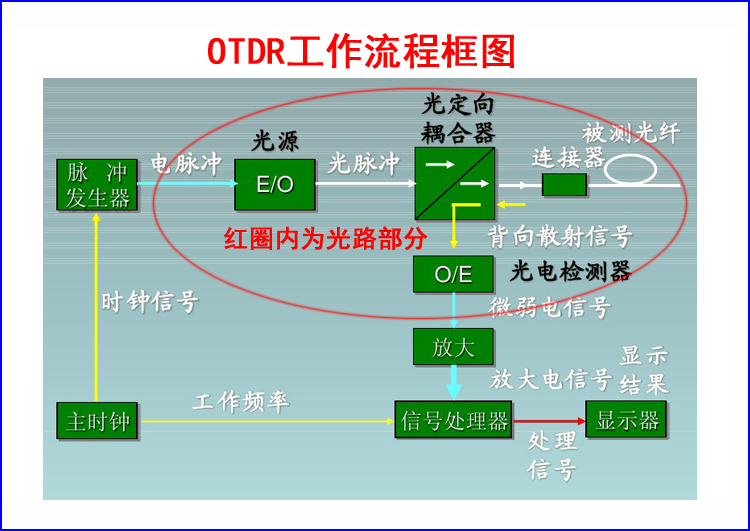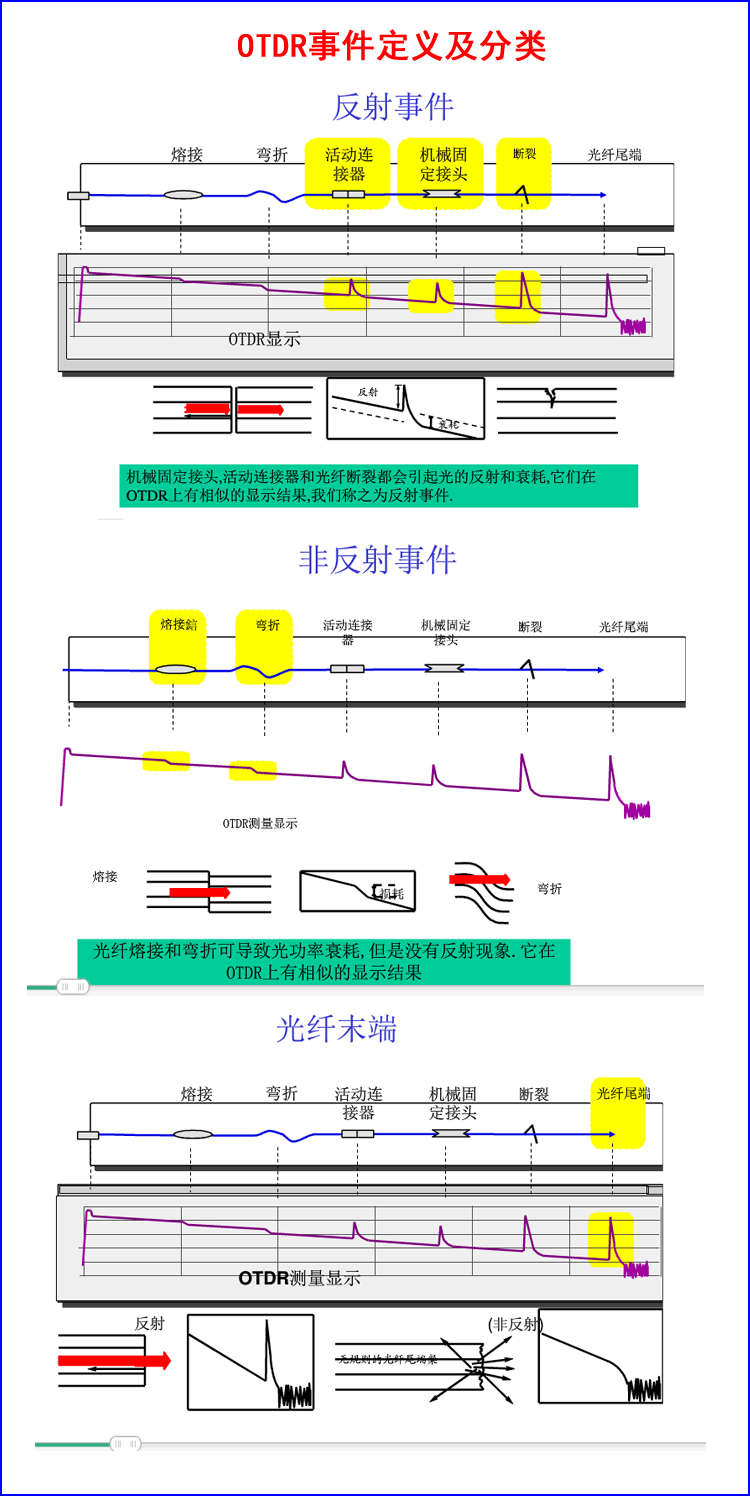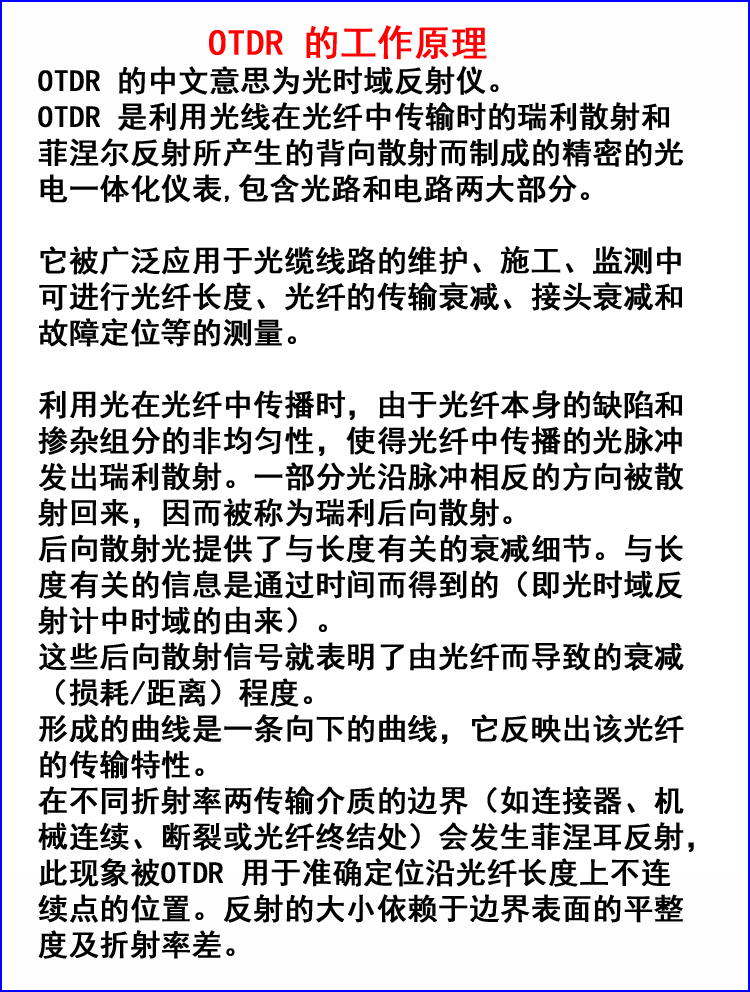Optical Time Domain Reflectometer (OTDR) Experience and Technical Problem Analysis
When using an OTDR to analyze fiber optic cables, understanding the results is crucial for assessing fiber quality and identifying potential issues. The OTDR test curve provides valuable insights into the condition of the fiber.
1. **Simple Fiber Quality Discrimination**
Under normal conditions, the OTDR test curve (for one or several optical cables) should have a consistent slope. A significant increase in slope indicates high attenuation. If the curve appears irregular with undulating or curved sections, it suggests serious degradation in fiber quality, which may not meet communication standards.
2. **Wavelength Selection and Single-Bidirectional Testing**
The 1550 nm wavelength allows for longer testing distances compared to 1310 nm. However, 1550 nm is more sensitive to bending, and its unit length attenuation is lower than that of 1310 nm. On the other hand, 1310 nm tends to show higher splice or connector loss. In practical maintenance, both wavelengths are typically tested and compared. For cases involving positive gain or long-distance lines, bidirectional testing is necessary for accurate analysis.
For example, the WIT780 operates at 1550 nm with a dynamic range of 24 dB, while the WIT7803 supports dual wavelengths (1310 nm and 1550 nm), each with a dynamic range of 24 dB.
3. **Connector Cleaning**
Before performing OTDR tests, it is essential to clean the connectors thoroughly, including the OTDR output port and the tested joint. Failure to do so can lead to excessive insertion loss, unreliable measurements, and noisy curves. Avoid using cleaning agents or index matching fluids other than alcohol, as they may damage the fiber connector. When testing pigtails, insert and remove them vertically with even force to prevent casing cracks or misalignment of laser coupling.
4. **Refractive Index and Scattering Coefficient Correction**
Fiber length measurement accuracy depends on the refractive index. A deviation of 0.01 in the refractive index can cause up to 7 meters of error per kilometer. For longer segments, it's recommended to use the refractive index value provided by the cable manufacturer.
5. **Ghost (Secondary Reflection Peak) Identification and Handling**
Ghosts appear as spikes on the OTDR curve due to strong reflections from the incident end. These do not cause significant loss, and their distance from the start is a multiple of the distance between the strong reflection event and the starting point. To reduce ghosting, use a short pulse width, increase the attenuation before strong reflections, or introduce a small bend at the end of the fiber to reduce backscattering.
6. **Positive Gain Phenomenon Processing**
A positive gain on the OTDR curve occurs when the fiber after a splice produces more backscattering than the fiber before the splice. This is often due to differences in mode field diameter or backscattering coefficients. To address this, perform two-way measurements and average the results. In practice, a loss of ≤ 0.08 dB is generally acceptable.
7. **Use of Additional Fiber**
Additional fiber is used to connect the OTDR to the fiber being tested, typically 300–2000 meters in length. Its main functions include front-end dead zone processing and terminal connector insertion measurement. Adding a transition fiber helps avoid the blind spot caused by connectors, allowing the fiber’s beginning to fall within the linear stability zone of the OTDR curve. This also enables accurate measurement of connector insertion loss at both ends.
By following these best practices, technicians can ensure accurate and reliable OTDR testing, leading to better fiber network performance and fewer service disruptions.



Lv 3Ph Asynchronous Motor,Three Phase Asynchronous Motor,3 Phase Asynchronous Motor,Asynchronous Motor 3 Phase
Yizheng Beide Material Co., Ltd. , https://www.beidevendor.com